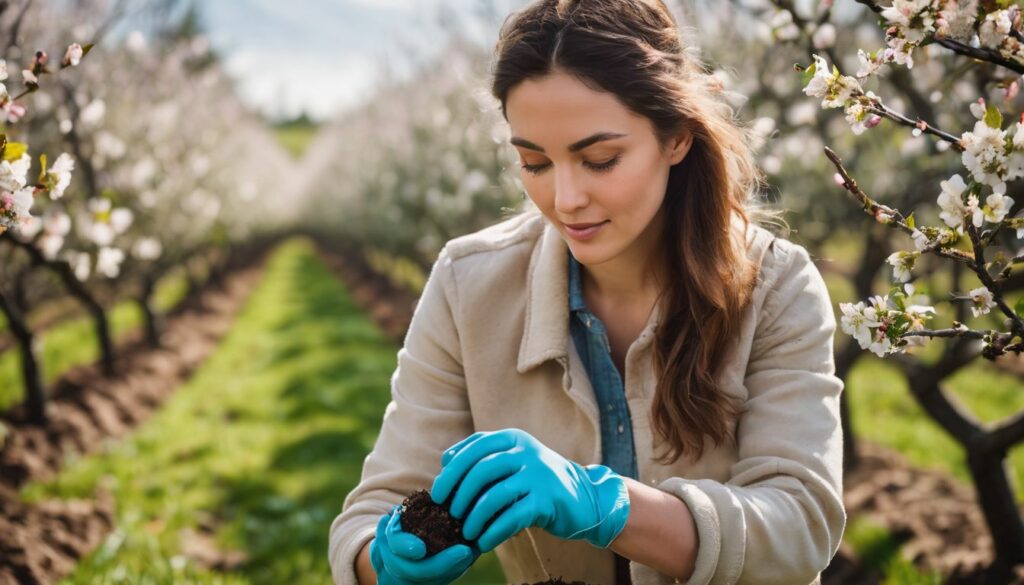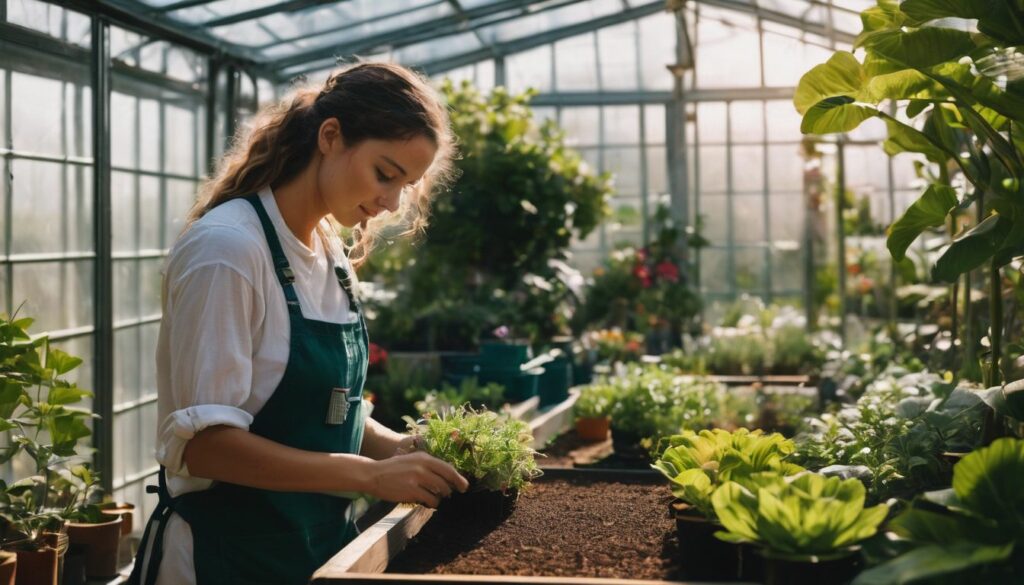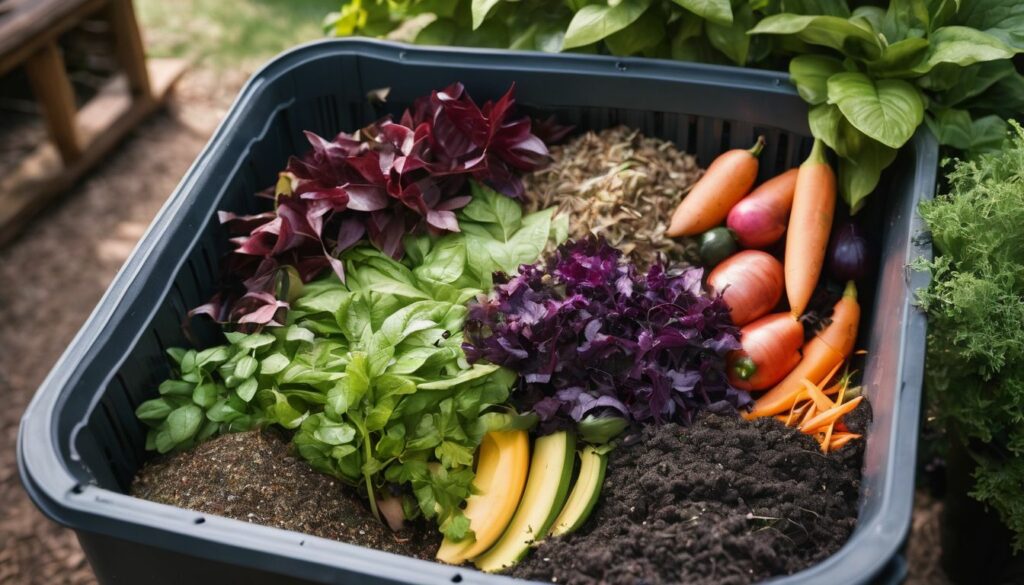Having a homegrown orchard with mouthwatering, fresh fruits just within reach is an enticing thought, isn’t it? Indeed, I found myself in your shoes once upon a time. Wondering about soil variants and tree spacing left me puzzled too.
With detailed research and my fair share of stumbles along the way, I discovered that establishing an orchard successfully calls for intricate planning well ahead of time – sometimes even spanning into 2-3 years! Fear not, this blog post shines a light on each essential step from nurturing the land to finally savoring your first luscious harvest.
Together we can transform those fruit-tree fantasies into reality!
Key Takeaways
- Assess the land and soil to ensure it’s suitable for an orchard: Check if the soil drains well, has the right pH level, and is a loamy type.
- Choose the right location and orchard design: Consider factors like sunlight exposure, available space, and ease of maintenance when planning where to plant your trees.
- Select high-quality trees that are disease-resistant and adapted to your local climate: Look for healthy nursery trees with strong trunks and well-formed branches.
- Properly space and plant your trees: Give each tree enough room to grow by considering their specific needs. Dig a proper hole, spread out the roots, backfill with soil, and water thoroughly after planting.
- Provide appropriate irrigation to keep your orchard thriving: Use drip irrigation or sprinklers based on factors like soil type, weather conditions, tree size, and growth stage.
- Fertilize regularly using organic compost or balanced fertilizers in early spring and late fall. Mulch around the base of each tree to conserve moisture, suppress weeds,
- Prune dead or damaged branches for better airflow & shape the tree for sunlight exposure. Train branches in desired directions using support structures
- Monitor pests & diseases regularly. Take preventive measures such as pruning infected branches & using organic pest control methods. Maintain a healthy
Planning and Preparing for Your Orchard
Assess the land and soil to determine its suitability for an orchard, considering factors such as drainage, sunlight exposure, and soil composition.
Assessing the land and soil
Check your land before you plant. The soil needs to be right for the trees to grow well. It should drain water fast but also keep some moisture in it. If the dirt turns into a hard ball when wet, it’s heavy clay and not good for fruit trees.
Light sandy soil drains too quick and doesn’t hold enough nutrients or water for trees. You need something in between – that’s loamy soil, with a good mix of sand, silt and clay particles plus organic matter like old leaves or composted manure mixed in.
And don’t forget about pH! Most fruit trees prefer slightly acidic soils with a pH between 6 and 7.
Choosing the right location and orchard design
When choosing the right location for your orchard, there are a few important factors to consider. First, assess the land and soil to ensure they are suitable for growing fruit trees.
Look for well-draining soil with good fertility and pH levels. Next, think about the orchard design that will work best for your needs. There is no one-size-fits-all layout, so consider factors like available space, sunlight exposure, and ease of maintenance.
Don’t forget to take into account any existing structures or obstacles that may impact the design.
Selecting high-quality trees
When selecting trees for your orchard, it’s important to choose high-quality ones that will thrive and produce abundant fruit. Look for nursery trees that are healthy with strong, straight trunks and well-formed branches.
Check the roots to ensure they’re not bound or circling around the pot. Healthy roots should be firm and evenly distributed. Consider buying trees that are disease-resistant and adapted to your local climate.
This can help prevent problems down the line and increase your chances of a successful harvest. Take your time when selecting trees and don’t be afraid to ask questions or seek advice from experts in nurseries or agricultural extension offices.
Considering pollination needs
When planning and planting your orchard, it’s important to consider the pollination needs of your fruit trees. Many fruit trees require cross-pollination, which means they need a different variety of tree nearby to produce fruit.
This is because most fruit trees are not self-fertile and rely on the transfer of pollen between flowers from different trees to set fruit. To ensure successful pollination, choose varieties that bloom at the same time or have overlapping blooming periods.
It’s also helpful to plant insect-attracting flowers near your orchard to encourage pollinators like bees and butterflies. Taking these steps will help you create a thriving orchard with bountiful harvests year after year.”.
Incorporating heirloom varieties
Growing heirloom varieties in your orchard can add diversity and unique flavors to your harvest. These varieties are known for their rich history and have been passed down through generations.
By incorporating heirlooms, you can preserve traditional fruit varieties that may not be commonly found in grocery stores. It’s important to research the specific requirements of each heirloom variety, such as soil type and sun exposure, to ensure they thrive in your orchard.
By planting these heritage fruits, you contribute to the conservation of genetic diversity and support the preservation of cultural heritage associated with these old-fashioned varieties.
Tips for Planting Your Orchard
When choosing the best time to plant your orchard, consider the specific requirements of each tree and aim for a period when the weather is mild and there is no risk of frost.
Choosing the best time to plant
I usually plant my fruit trees in the early spring or late fall when the soil is moist and cool. This gives them a chance to establish their roots before facing extreme temperature changes.
It’s important to avoid planting during hot, dry periods, as this can stress the young trees and make it harder for them to survive. I also consider the specific needs of each type of tree when deciding on the best time to plant.
For example, apple trees do well when planted in early spring, while peach trees prefer being planted in late winter or early spring. Planning ahead and choosing the right time for planting can greatly increase your orchard’s chances of success.
Properly spacing and planting trees
When planting an orchard, it is important to properly space and plant the trees. This ensures that each tree has enough room to grow and receive adequate sunlight and nutrients. The spacing between trees will depend on the specific type of fruit or nut tree being planted.
For example, dwarf trees may require a smaller distance between them compared to standard-sized trees. Additionally, considering the width of mature trees is crucial to prevent overcrowding in the future.
When planting the trees, dig a hole that is wide and deep enough for the root system, making sure not to bury the trunk too deeply. Gently spread out the roots before backfilling with soil and firmly pressing it down around the base of the tree.
Tips for planting different types of trees (dwarf vs. standard, fruit vs. nut)
When planting different types of trees in your orchard, it’s important to consider their specific needs. For dwarf trees versus standard trees, make sure to provide proper support and staking for dwarfs due to their smaller size.
When it comes to fruit versus nut trees, keep in mind that nut trees generally require more space between each tree compared to fruit trees. This spacing is necessary for optimal growth and development.
Also, consider the pollination requirements of your chosen tree varieties to ensure a successful harvest. By following these tips, you can plant different types of trees in your orchard effectively and maximize their productivity.
Caring for Your Orchard
To care for your orchard, provide appropriate irrigation, fertilize and mulch regularly, prune and train trees for optimal growth, and proactively manage pests and diseases.
Providing appropriate irrigation
Irrigation is an important part of caring for your orchard. Fruit trees need enough water to grow and produce healthy fruits. It’s crucial to provide them with the right amount of irrigation so they don’t get too much or too little water.
Proper irrigation helps promote root growth, prevent drought stress, and ensure optimal fruit production. To determine how much water your orchard needs, consider factors like soil type, weather conditions, tree size, and stage of growth.
Different types of irrigation systems can be used, such as drip irrigation or sprinklers, depending on your specific circumstances. Regularly monitoring soil moisture levels and adjusting your watering schedule accordingly will help keep your orchard thriving.
Fertilizing and mulching
Fertilizing and mulching are important steps in caring for your orchard. Adding fertilizer to the soil provides necessary nutrients for tree growth and fruit production. It’s best to follow a soil test or consult with a local agricultural extension office to determine the specific needs of your orchard.
Applying organic compost or well-balanced fertilizers in early spring and late fall can help maintain healthy trees. Mulching around the base of each tree helps conserve moisture, suppress weeds, and regulate soil temperature.
Organic mulches like wood chips or straw are commonly used and should be applied in a 3-4 inch layer around the tree, keeping it away from the trunk to prevent rotting. By regularly fertilizing and mulching your orchard, you can promote optimal growth and ensure abundant harvests.
Pruning and training trees for optimal growth
To ensure that your fruit trees grow strong and healthy, it is important to prune and train them properly. Pruning helps remove any dead or damaged branches, promotes good airflow, and shapes the tree for better sunlight exposure.
Training involves guiding the tree’s growth in a desired direction by tying branches to support structures. By pruning regularly and training your trees, you can encourage optimal growth and maximize fruit production.
Remember to use sharp tools, make clean cuts at an angle, and avoid removing too much foliage at once. And don’t forget to consult local resources or experts for specific pruning techniques for different types of fruit trees!
Managing pests and diseases
Managing pests and diseases is an important aspect of caring for your orchard. Fruit trees can be susceptible to various pests, such as aphids, mites, and fruit flies, as well as diseases like apple scab and brown rot.
To keep these issues under control, it’s essential to regularly monitor your trees for signs of infestation or disease. Taking preventive measures like pruning away infected branches and using organic pest control methods can help protect your trees.
Additionally, maintaining a healthy orchard ecosystem by providing proper irrigation and fertilization can strengthen the trees’ natural defenses against pests and diseases. By staying proactive in managing these challenges, you can ensure the long-term success of your orchard.
Harvesting and Maintaining Your Orchard
When it comes to harvesting your orchard, timing is crucial. Each fruit variety has its own optimal harvest window, so it’s important to stay observant and assess the ripeness of your fruits regularly.
Additionally, maintaining your orchard requires ongoing care such as pruning for proper growth and training, regular irrigation to provide adequate moisture for healthy trees, applying suitable fertilizers to promote nutrient-rich soil, and implementing effective pest control measures to protect your crop.
By staying proactive in these maintenance tasks year-round, you can ensure a successful and bountiful harvest from your orchard.
Knowing when to harvest
Harvesting your orchard at the right time is crucial for enjoying the best flavor and quality of your fruits. To determine when to harvest, look for visual cues like changes in color, size, and texture.
For example, apples should have a deep red or green color depending on the variety and feel firm to the touch. Additionally, check if the fruit comes off easily from the tree with a gentle twist.
It’s also helpful to taste-test a few fruits to ensure they are sweet and flavorful before picking them all. Remember that different types of trees have different ripening times, so refer to specific guidelines for each fruit variety in your orchard.
Proper storage and preservation techniques
After all the hard work of planting and caring for your orchard, it’s important to know how to properly store and preserve your harvest. Storing fruit in a cool, dry place is key to extending its shelf life.
Apples, for example, can be stored in a refrigerator or a cool cellar at around 32-40°F with humidity levels of 90%. You should also inspect your fruit regularly for any signs of spoilage or decay, as one rotten piece can quickly affect others.
To preserve your fruit, you can try different methods like making jams, jellies, or freezing them. Freezing is particularly effective for berries and stone fruits like peaches and plums.
Maintaining and protecting your orchard for long-term success
To ensure the long-term success of your orchard, it is important to prioritize proper maintenance and protection. Regular care and attention will help your trees stay healthy and productive.
This includes providing adequate irrigation to keep the soil moist but not waterlogged, fertilizing the soil to provide necessary nutrients, and mulching around the base of the trees to retain moisture and suppress weeds.
Pruning is also essential for maintaining tree shape and promoting optimal growth. Keep an eye out for pests and diseases that can damage your orchard, using appropriate control methods when necessary.
Conclusion
In conclusion, planting an orchard successfully as a beginner is possible with the right planning and preparation. By assessing your land and soil, choosing the right location and trees, and caring for your orchard properly, you can enjoy a bountiful harvest.
Follow these tips and soon you’ll be reaping the rewards of your hard work in your very own orchard!
FAQs
1. How do I start planting an orchard?
Start by planning your orchard. Choose the right fruit or nut trees you want to grow. Make sure you know how much spacing between fruit trees is needed.
2. When is a good time for planting an orchard?
You can plant an orchard in the spring or fall. Always remember to prepare your soil before planting.
3. Can I plant my apple orchard on a slope?
Yes, you can! Planting an apple orchard on a slope needs careful planning but it’s possible.
4. What are some tips for successful orchard planting?
Some tips include picking the right direction for your orchard and making sure there’s enough space between each tree.
5.What will I gain from growing my own fruit in an orchard?
Growing your own fruit in an orchard helps save money and adds new trees to beatify your land.





